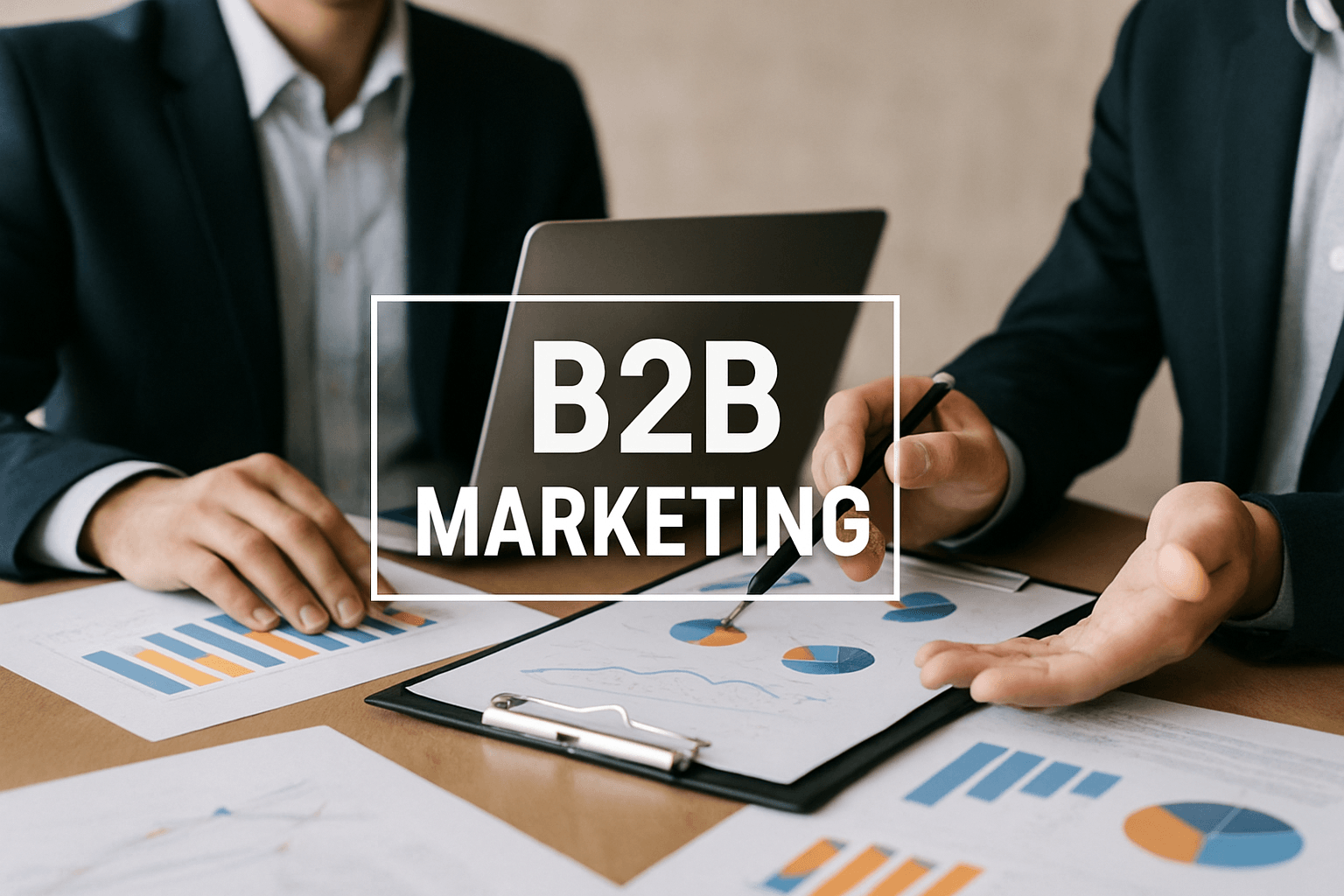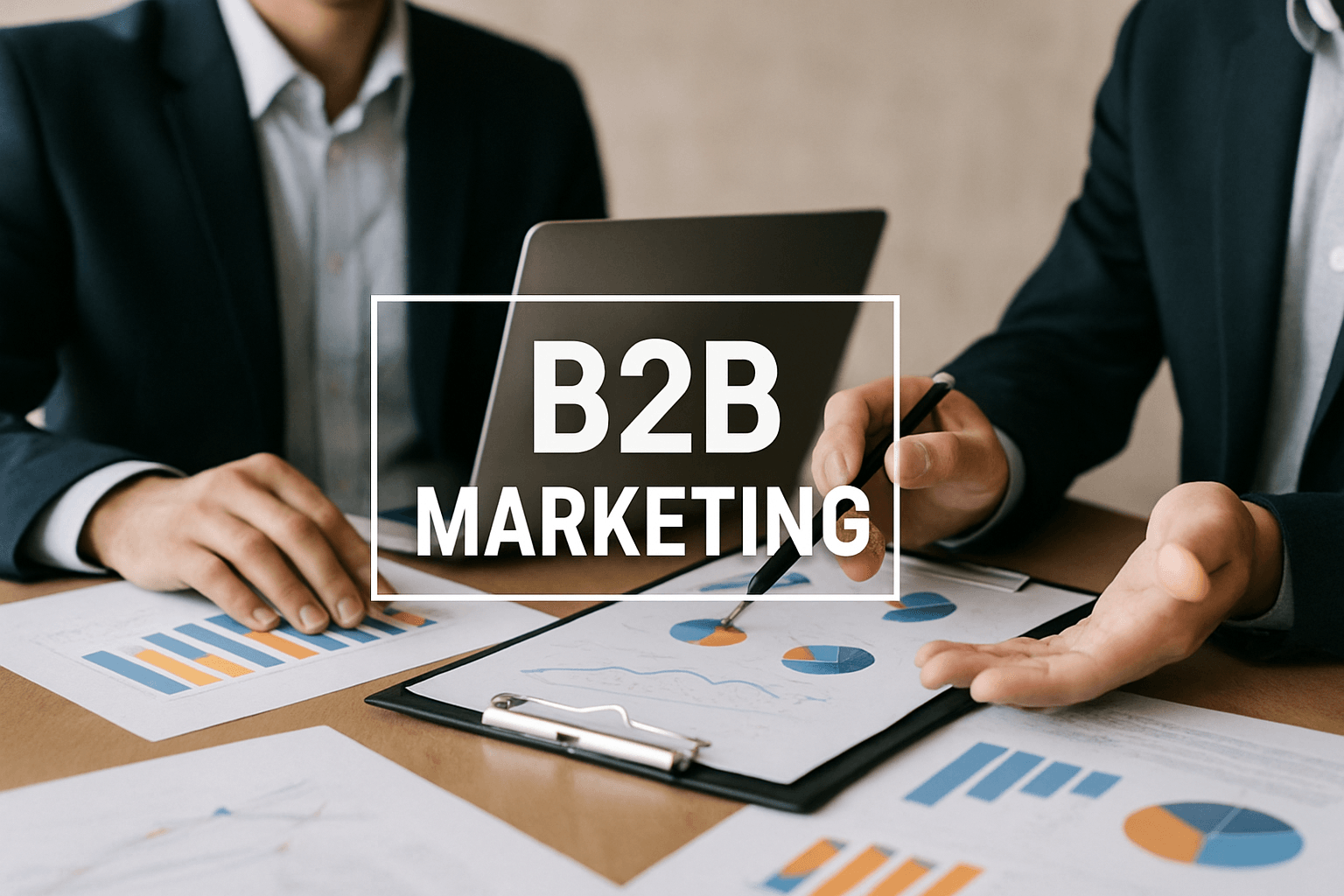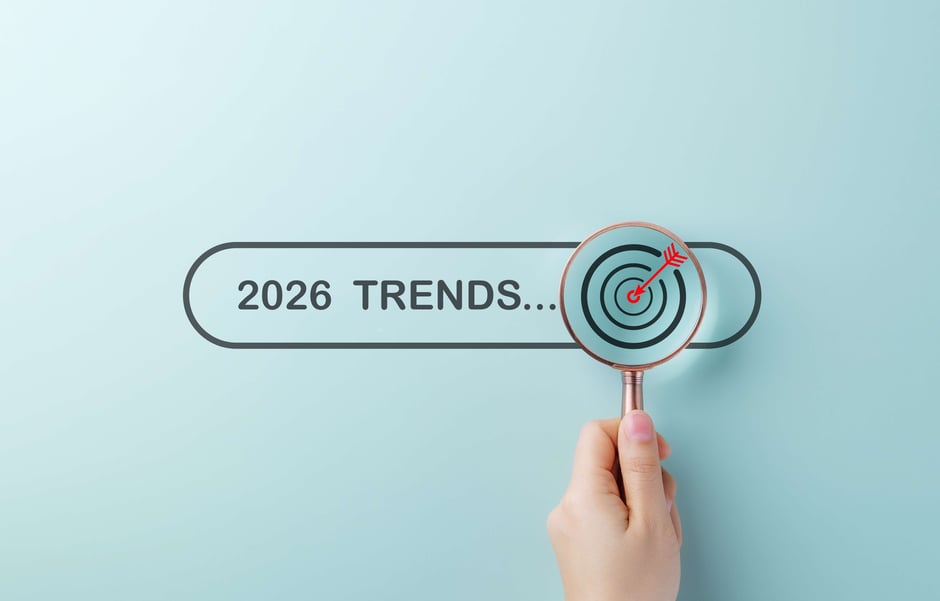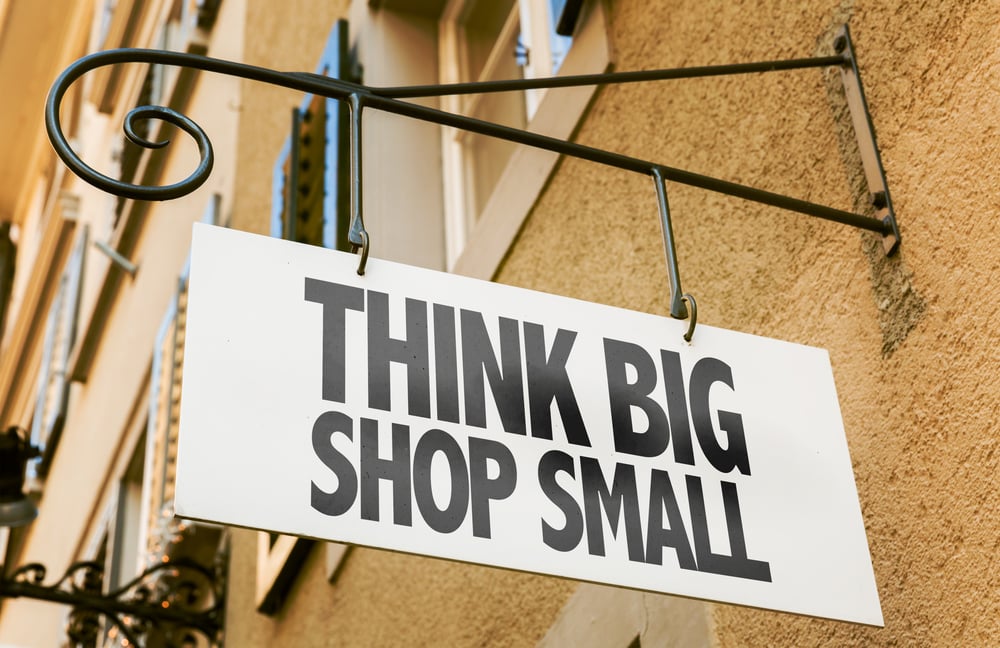
The Ultimate Guide to LinkedIn Marketing: 2026 Social Selling Strategies
In the digital era, where personal connections have shifted online, LinkedIn emerges as a frontrunner in facilitating B2B Engagement through Social...
8 min read
Brands at Play : Oct 25, 2025 2:45:16 PM

 Building Trust, Driving Growth, and Humanizing the Complex Sale
Building Trust, Driving Growth, and Humanizing the Complex SaleB2B marketing is having a moment — not because the rules have changed, but because the buyers have.
Today’s business decision-makers are digital-first, hyper-informed, and emotionally driven — yes, even in B2B. They don’t just want another white paper; they want a partner who gets their world, understands their pain points, and helps them win.
If your B2B marketing still feels like a string of disconnected campaigns or a game of lead-count bingo, this guide will help you shift from noise to nuance — from broadcasting to belonging.
At its core, B2B marketing is about one thing: helping businesses make better decisions.
But behind that simplicity lies complexity — longer sales cycles, multiple stakeholders, regulatory headaches, and a buyer journey that looks less like a funnel and more like a spider-web.
Unlike B2C, where emotion drives impulse, B2B is emotion wrapped in logic. Your buyers justify with data but decide with trust.
That means your mission isn’t to sell — it’s to build authority, demonstrate empathy, and become a trusted voice in an increasingly skeptical market.
 1. Content Marketing: Educate, Don’t Preach
1. Content Marketing: Educate, Don’t PreachIn B2B, content is the currency of trust.
Companies such as HubSpot and Blackbaud didn’t dominate because they shouted the loudest — they built massive ecosystems of helpful, human content that educated buyers long before they were ready to buy.
Their playbook:
Build content pillars around what your customers actually need to know.
Invest in original thought leadership, not regurgitated tips.
Turn data, insights, and customer stories into narratives — not case-study PDFs that no one reads.
Pro tip: Great B2B content sounds like an insightful conversation, not a product brochure wearing a tie.
ABM is where marketing and sales stop fighting and start aligning.
Take Adobe — they rebuilt their B2B motion around account-based orchestration, using data to personalize experiences across the customer lifecycle. They found that 42 % of their closed-won deals were influenced by a coordinated LinkedIn and ABM strategy — and those deals were 161 % larger than average. LinkedIn Business Solutions
And Blackbaud achieved 94 % of target accounts engaged and 10x ROI on pipeline through a focused pilot using ABM with RollWorks. AdRoll ABM (formerly RollWorks)
Stop chasing leads. Start building relationships.
The best B2B brands aren’t building audiences — they’re building communities.
They don’t just broadcast messages; they invite members, listen, connect.
When your customers begin quoting your content, sharing your memes, and wearing your swag — you’ve moved from vendor to movement.
Ask yourself: What conversations could we lead that would make our brand indispensable?
 4. Marketing Automation: Scale with Soul
4. Marketing Automation: Scale with SoulAutomation is the backbone of modern B2B growth — but only if used to serve, not spam.
In the financial services world, for example, U.S. Bank implemented automated workflows that increased task automation by 80 % and improved sales-ready lead conversion by 20 %.
Technology and B2B marketing tools should enhance human connection, not replace it. The real magic happens when automation delivers relevance — the right story, to the right person, at the right moment.
 5. Data, Insights & the Death of Gut Feel
5. Data, Insights & the Death of Gut FeelLet’s be blunt: “We think this might work” is not a strategy.
The best B2B marketers operate like analysts and storytellers rolled into one. They mine customer data for insights, then translate those insights into compelling narratives.
Metrics that matter:
Pipeline velocity (how fast deals move)
Customer lifetime value (LTV)
Content-assisted revenue (not just clicks)
Engagement by account (ABM gold)
The goal isn’t to chase vanity metrics — it’s to connect marketing activity to business impact.
By integrating ABM with influencer marketing, Adobe doubled campaign engagement across 900 targeted enterprise accounts. TopRank® Marketing
Lesson: When you combine data and creativity, personalization stops feeling robotic — it feels relevant.
Their automation overhaul didn’t just improve efficiency; it freed marketers to focus on human storytelling.
Lesson: Automation gives you time to be more human, not less.
With a pilot focused on K-12 education verticals, Blackbaud engaged 94 % of target accounts, achieved a 190 % increase in engaged visitors and generated a 10× ROI on pipeline generation in three months. AdRoll ABM (formerly RollWorks)
Lesson: Start small, scale fast — focus beats reach every time.
 Emerging Trends Shaping the Next Era of B2B Marketing
Emerging Trends Shaping the Next Era of B2B MarketingAI-Powered Personalization: Predictive content and intent data that meet buyers before they even search.
Short-Form Thought Leadership: Bite-sized video, micro-insights, and carousel storytelling that humanize complex topics.
Privacy-First Targeting: As third-party cookies die, first-party data becomes your strategic moat.
Community-Led Growth: From Slack groups to micro-events, the next wave of B2B growth will be driven by belonging.
Brand as Differentiator: In crowded markets, brand equity is performance marketing.
The days of random acts of marketing are over. No more disconnected campaigns, vanity metrics, or siloed teams chasing different KPIs. The brands that win in this next era are those that think and act like ecosystems — aligning brand, content, data, and customer experience into a single, coherent narrative.
Unified strategy doesn’t mean one-size-fits-all messaging; it means orchestrated intention. Every channel, every asset, every touchpoint should ladder up to the same brand story and measurable business goal. The future belongs to marketers who can connect creativity with analytics — not just to drive awareness, but to drive alignment across the entire organization.
The next competitive advantage in B2B isn’t price or product — it’s empathy. Every great B2B brand now acts less like a vendor and more like a business partner, co-creating value with its clients.
Personalization goes deeper than inserting a first name into an email or customizing a landing page. It’s about understanding your customer’s ecosystem — their market pressures, KPIs, and internal politics — and speaking to those realities with precision and respect.
The best B2B marketers are students of their customers. They use data to understand, not to manipulate. They listen before they lead. And they build partnerships rooted in shared outcomes, not transactional wins.
Marketing used to be about “launch and leave.” Today it’s about “learn and iterate.” The best B2B marketers don’t chase perfection — they chase progress at scale.
Every campaign is an experiment. Every data point is a clue. The goal isn’t to avoid failure; it’s to fail faster, smarter, and more affordably than your competitors.
This mindset transforms marketing from a cost center into an innovation lab. It shifts your team from reactive to proactive, from campaign builders to insight engines. The brands that treat learning as a muscle — not a moment — are the ones that stay relevant, resilient, and relentlessly ahead of the curve.
In a world obsessed with growth hacks and automation, authenticity is your unfair advantage. Thought leadership isn’t about self-promotion; it’s about service.
The most trusted B2B brands are those that educate, not just advertise. They publish content that helps people do their jobs better, make smarter decisions, and see around corners. They stand for something.
Building trust takes time — but once earned, it compounds. Every article, keynote, and customer interaction becomes a brick in your brand’s credibility wall. And when trust and insight intersect, you move from “vendor” to “voice of the industry.”
B2B marketing has evolved from selling to storytelling, from transactions to transformation. The future isn’t about pushing products — it’s about pulling people toward a shared vision of success.
Because at the end of the day, business doesn’t buy from business.
People buy from people who help them win.
The brands that will define the next decade will be those that are brave enough to be both smart and human — powered by data, but driven by purpose.
What is B2B marketing and how does it differ from B2C?
B2B marketing involves promoting products or services to other businesses, often with longer sales cycles and multiple stakeholders. Meanwhile, B2C marketing is focused on individual consumers, shorter buying cycles, and more emotional impulses.
What are content pillars and why are they important in B2B?
Content pillars are thematic clusters of topic areas that help structure your content strategy (e.g., “industry trends,” “customer stories,” “how-to guides”). They ensure consistent coverage, relevancy, and coverage of each audience segment.
What is account-based marketing (ABM)?
ABM is a B2B strategy where you treat each high-value account like its own market — tailoring messaging, channels, and engagement plans to that account’s buying committee and pain points.
How can B2B organisations build community rather than just an audience?
Build spaces (online or offline) where customers, prospects and partners interact, contribute, share insights and feel part of something. Encourage user-generated content, host peer forums, and give members a voice.
When should a B2B company use marketing automation?
When you have multiple channels, repetitive workflows, segmented audiences, and enough volume to justify automation tools. The key: automation should support human connection, not replace it.
Which metrics matter most in B2B marketing?
Focus on business impact: pipeline velocity, customer lifetime value (LTV), content-assisted revenue, conversion rates, and account engagement — not just likes or clicks.
How can B2B marketers prepare for the end of third-party cookies and privacy shifts?
Invest in first-party data, revise targeting strategies, use intent data, build owned communities, and measure channel contribution beyond cookies.
What role does thought leadership play in B2B marketing?
Thought leadership builds credibility, opens doors, and positions your brand as a trusted advisor — crucial when sales cycles are long and decisions are complex.
How do you align marketing and sales in B2B organisations?
Create shared goals, define account criteria together, align metrics (e.g., pipeline not just leads), share dashboards, and plan joint engagement for target accounts.
What’s the best approach to scale multiple B2B content verticals without fragmenting your brand?
Use a hub-and-spoke model or content architecture: one central brand hub with limited, governed sub-verticals; consistent voice, themes, governance, and an editorial calendar to manage content across pillars.
Account-Based Marketing (ABM): A strategy focused on targeting and engaging specific high-value accounts, treating each account like a market of one.
Buyer Journey: The process a customer goes through: awareness → consideration → decision. In B2B it involves multiple stakeholders and longer cycles.
Content Pillar: Major thematic areas around which you build clusters of content and supporting articles.
Conversion Rate: The percentage of targets (leads or accounts) who take a desired action (e.g., request a demo).
Customer Lifetime Value (LTV): Predicted revenue that a business can expect from a customer over the entire relationship.
Engagement Rate: A metric measuring how audiences interact with content (likes, shares, comments, time spent).
Hub-and-Spoke Model: A brand architecture where one core hub (brand) supports several managed sub-verticals (spokes) under governance.
Marketing Automation: Technology that automates repetitive marketing tasks (e.g., email workflows, lead-scoring) to scale outreach.
Pipeline Velocity: The speed with which leads move through the sales pipeline to closed business.
Thought Leadership: Content and positioning that builds your brand as an authority rather than just a vendor.
Stephanie Unterweger: Nov 2, 2025
Brands at Play: Oct 25, 2025
Brands at Play: Oct 25, 2025

In the digital era, where personal connections have shifted online, LinkedIn emerges as a frontrunner in facilitating B2B Engagement through Social...

Small businesses are rewriting the rules of marketing. With tighter budgets, leaner teams, and more competition than ever, success comes down to one...

Discover the 2026 best practices for customer segmentation with AI, moving beyond demographics to boost engagement, personalization, and ROI.